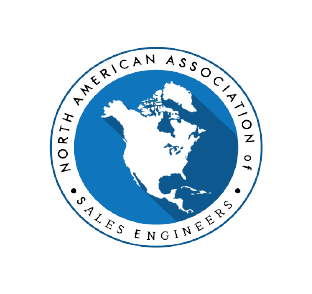
Dear Members and Colleagues,
At the North American Association of Sales Engineers (NAASE), we are excited to share our insights and projections for the Sales Engineer (SE) profession as we look ahead to 2027. While we recognize that predicting the future is never certain, our analysis is based on our collective experience and knowledge, offering a thoughtful glimpse into what might shape our industry in the coming years. We encourage you to view this as a starting point for further dialogue and reflection.
Key Trends for Sales Engineers in 2027:
1. Automation and AI: Low Risk of Replacing SEs
While automation continues to influence many industries, the likelihood of SE roles being overtaken by AI or robots remains low. This is great news for our community! If you’re curious to dive deeper, here’s a useful resource: Will Sales Engineers be replaced by AI & Robots? (willrobotstakemyjob.com) The human touch, particularly in relationship-building and nuanced solution presentations, remains essential.
2. SaaS Spending & Efficiency
As companies become more savvy in managing their software budgets, tools like BetterCloud are helping them streamline subscriptions and reduce underutilization. This trend may challenge the traditional expansion of software budgets, but it also presents an opportunity for SEs to demonstrate value in ensuring solutions are effectively utilized and optimized.
3. Complexity of B2B Sales Cycles
Over the past decade, we’ve seen B2B sales cycles grow longer and more complex, with larger buying committees and more rigorous decision-making processes. However, we anticipate a shift. As companies face pressure to do more with fewer resources, buying committees may shrink, and decision-making processes could become quicker and leaner. This could simplify certain sales, potentially reducing the need for SE involvement in some cases—but also presenting opportunities for SEs to have greater impact where complexity persists.
4. Steady Growth in SE Roles
The U.S. Bureau of Labor Statistics predicts a 6% annual growth rate for SE roles through 2033, which is above the national average. This steady growth reflects the continued importance of SEs in driving business success, particularly in the technical sales arena. It’s worth noting that the BLS recognizes NAASE as a valuable resource for Sales Engineering professionals, a testament to the strength of our community.
5. Increased Importance of Soft Skills
As automation handles more technical tasks, soft skills will become increasingly critical for SEs. Emotional intelligence, relationship-building, and adaptability will set top SEs apart. The ability to quickly learn and apply new technologies—and, more importantly, translate that into value for customers—will be essential for ongoing success.
6. Expanding Roles for SEs
SEs will increasingly move beyond traditional boundaries. Post-sales involvement, especially in customer success and solution optimization, will become more common. As recurring revenue models dominate, ensuring customers derive maximum value from their purchases will be a key responsibility. Additionally, cross-functional collaboration will expand, as SEs work closely with product development, marketing, and customer support to shape solutions and improve customer satisfaction.
In Summary:
We believe the role of the Sales Engineer will remain vital to the B2B sales process and the broader economy well into 2027 and beyond. While the landscape may evolve, the need for skilled, adaptable, and relationship-driven SEs will only grow.
We’d love to hear your thoughts on these projections! Let’s continue the conversation on how we can collectively shape the future of this essential profession.
Warm regards,
The Officers and Advisory Board Members of NAASE, including:
Diana Cervantes, President
Ken Lambert, Vice President
Damian Hanna
Pat Tripathi
Meg Stewart
Adam Joyce
Luis Vasquez Ruiz
Mary Carter
Robert Bernasconi
Sandra Rogoza
Tony Matos